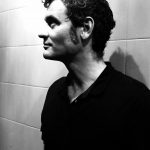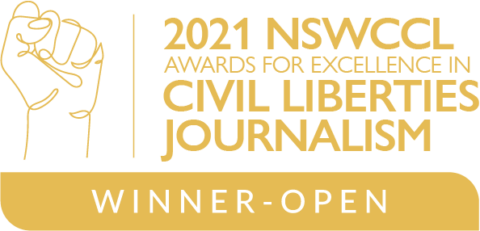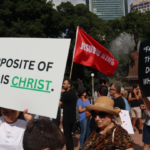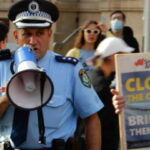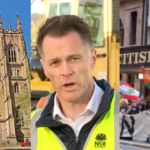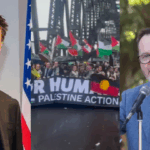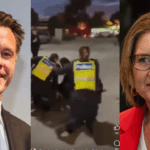Court Rejects Legislation Empowering Police to Move-On Protesters at Place of Worship
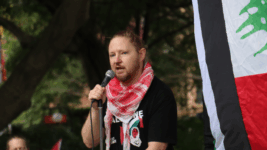
Published 17 October 2025
“In this matter we have been able to uphold the right of people in NSW to protest. That is important because there is so much to protest about,” said Josh Lees, Palestine Action Group spokesperson, on Thursday, 16 October 2025. Lees had been the chief plaintiff in the successful legal challenge against the validity of a New South Wales Labor-passed police move-on power targeting protests near places of worship.
NSW Supreme Court Justice Anna Mitchelmore ruled that the move on power “impermissibly burdens the implied constitutional freedom” of political communication. The action was raised in mid-March 2025, against the broad catch-all move-on power NSW premier Chris Minns was so keen to get across the line in February, as part of the Crimes Amendment (Places of Worship) Bill 2025
The now revoked places of worship move-on power had permitted police to give a direction to a “demonstration, protest, procession or assembly” to leave an area if it had not been cleared with NSW police prior and it was “near a place of worship”, and what “near a place of worship” was supposed to mean was left to officer discretion, so it could likely cover the entire Sydney CBD.
Lees explained that his group has been committed to mobilising over the last 24 months to build global pressure to end the Israeli-perpetrated genocide in Gaza and to demand that the Australian government take adequate action to prevent the genocide, as the 1948 Genocide Convention requires it to, and he added that the repeal of the move-on law means one more roadblock gone.
Not only was the move-on power an innocent looking law that gave police a catch-all net to shut down protest right across Gadigal land in Sydney, but the law that Minns had first spruiked in late 2024, was wrapped together in a bundle with two hate crime bills and rushed through parliament in February, amidst a climate of fear over an antisemitic crimewave that turned out to be a hoax.
An unconstitutional law
“We have just had a victory over the Chris Minns government, where his antiprotest laws that he rushed through parliament in February based on a pack of lies about a supposed antisemitism crisis, which he and a bunch of criminals manufactured, those antiprotest laws were indeed unconstitutional and were struck down by the Supreme Court,” Lees said after the ruling.
“These laws said that protesting near a place of worship, which would cover almost the entire CBD, the police would have the power to ban those protests – any protest near a place of worship basically, is what he tried to ram through,” he added. “This is Chris Minns’s typical antiprotest agenda and in particular his Palestine agenda, as this is a premier who has backed a genocide for two years.”
The Places of Worship Bill inserted subsection 200(5) into the Law Enforcement (Powers and Responsibilities) Act 2002 (NSW), or the LEPRA. Section 200 places limitations on the police move-on powers contained in part 14 of the LEPRA. Subsection 200(5) had served to ensure that there was not a limitation on police officers shutting down protests when they were simply near a church.
NSW Greens MLC Sue Higginson explained in a presser that the antiprotest laws and two hate crime bills passed circa 20 February were rushed through on the back of fears over a spate of “antisemitic” property damage crimes in Sydney, which turned out to be staged by organised crime to convey the spectre of a crisis, and Minns was likely privy to these suspicions at the time the laws were passed.
“The court has made clear that the premier of NSW was wrong to punish people exercising their right to protest,” the NSW Greens justice spokesperson underscored. Higginson further added that the antiprotest move-on law had led to a dispute between police and protesters on Bidjigal land in Belmore in June, that saw a senior officer punch and almost blind legal observer Hannah Thomas.
Forged on mountains of mistruth
Minns said that the court ruling was “disappointing”, and it was “important to note that this does not mean there is free rein outside places of worship”. However, no one in the state had been going for broke for protests outside of churches or synagogues or mosques anyway. The premier, whom Lees described as having “massive egg on his face”, added that the other place of worship law still stands.
The Place of Worship Bill contained two parts with the first comprising of the new offence of impeding, harassing, intimidating or threatening a person accessing a place of worship, contrary to section 214B of the Crimes Act 1900 (NSW). This crime carries two years prison and/or a fine of $22,000. These are the same extreme penalties that apply to the 2022 NSW antiprotest regime.
“It’s very important to remember that the political catalyst for the parliament passing this law was actually a big lie, the suggestion of an antisemitic protest at a synagogue in Sydney,” said NSW Labor MLC Stephen Lawrence in comment posted on Facebook on Thursday. “The Liberal Party more than anyone else regurgitated the big lie.”
Minns first spruiked the place of worship protest laws last December, after a rare protest occurred at such a place, Sydney’s Great Synagogue, on 4 December 2024. This was because, as Lawrence recalls, “an event about Israeli military industries featuring an IDF speaker” was to be held and at the last minute, it was announced the nonreligious event would be held in the synagogue.
Lawrence, also a well-known Sydney barrister, explained in parliament on 20 February 2025, that a key issue with the move on power was that it would allow the police to move on protesters near places of worship when participants were obstructing people. Yet, these people did not specifically need to be near the place of worship, rather the obstruction could entail anyone out in public.
The place of worship law was then lumped in with the two hate crime bills and passed in February in the midst of a moral panic around a spate of antisemitic crimes staged by organised crime, as well as on the force of a list revealing a spike of 815 reported antisemitic incidents that when scrutinised turned out to be 367 incidents, prior to this last figure being found to be exaggerated too last week.
Majors attempt to kill protest
The NSW Council for Civil Liberties said in a post on Thursday that “the laws passed by the Minns government gave the police the power to move on any protesters ‘in or near’ a place of worship. Today, the NSW Supreme Court has ruled that these laws impermissibly burden the implied right to freedom of speech.”
“We call on the members of parliament to repeal these laws in their entirety,” the council added. The 2022 antiprotest laws prohibit unauthorised protests that obstruct bridges, tunnels and major roads in Greater Sydney, Wollongong and Newcastle, along with a list of major facilities in NSW. These laws carry the steep penalties of two years inside and a $22,000 fine.
Higginson added that when the NSW police attempted to shut down the 3 August 2025 Palestine Action Group march across the Sydney Harbour Bridge, via the courts, the prosecution had raised the move on power as reason to prevent the procession from going ahead, due to the presence of so many churches in the CBD. That rally saw up to 300,000 marching in opposition to the Gaza genocide
“Once again, Chris Minns has shamefully lined up with a genocidal regime for two years now,” Lees continued in the wake of the ruling on Thursday morning. “He has done more to stop us protesting against the genocide than anything he has done himself to try and stop the genocide.”
